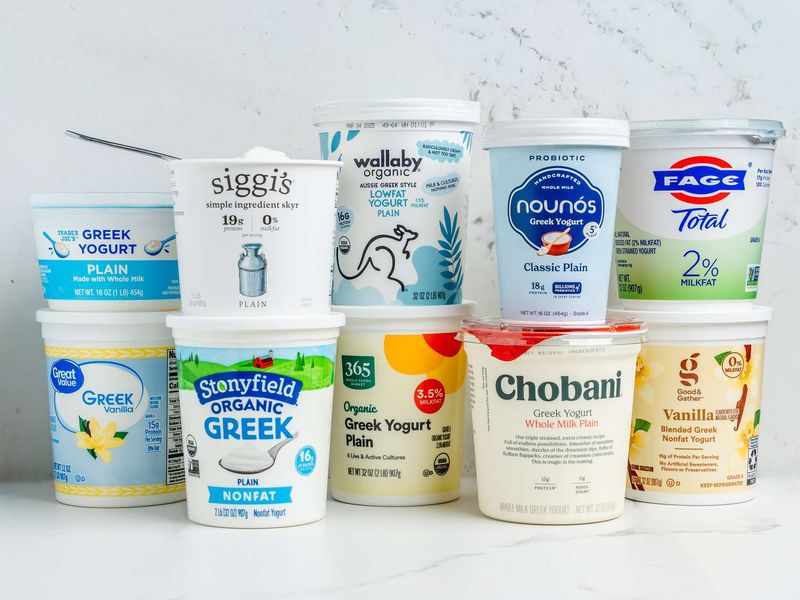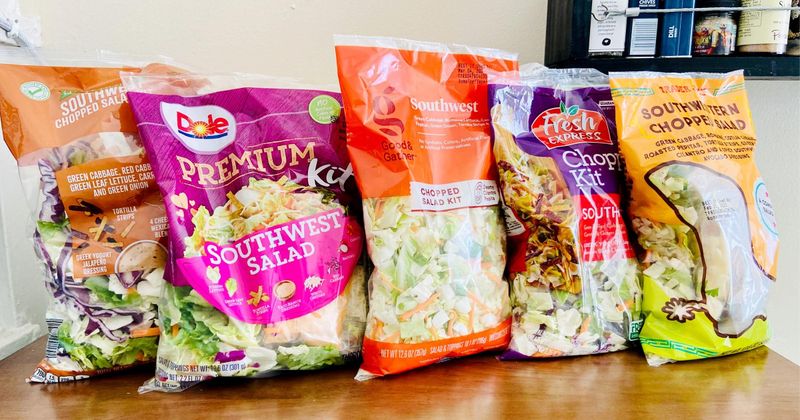In recent times, everyday grocery items have become increasingly burdensome on the average budget. The once familiar and affordable staples, cherished in kitchens around the world, have unexpectedly turned into luxury items. Factors like supply chain disruptions, inflation, and environmental challenges have driven prices up, putting a strain on household finances. As these essential products continue to rise in cost, many families are forced to rethink their shopping habits and dietary choices. This article explores 18 such grocery items that were once considered staples but are now stretching the average consumer’s wallet to its limits. Discover why these items have become more expensive and alternatives families are considering.
Eggs

Once a breakfast staple, eggs have now become a symbol of price hikes in grocery stores. The perfect, protein-rich food has seen a massive surge in cost, largely driven by supply chain challenges and avian flu outbreaks. Shoppers are left wondering if they should substitute eggs with other sources of protein.
For those who enjoy baking, the increased cost of eggs may force reconsideration of recipes or exploration of egg-free alternatives. The fluctuation in egg prices serves as a reminder of how fragile the balance of supply and demand can be.
Many households who relied on eggs for their affordability are now having to adjust their meal plans drastically.
Milk

In many households, milk is a staple that finds its way into breakfast cereals, coffee, and more. However, the increase in milk prices has made consumers think twice about purchasing in bulk.
The rising costs can be attributed to factors such as supply chain issues and inflation. For young families, the decision to buy milk may involve careful budgeting and compromises elsewhere in their grocery list.
The trend toward increasing milk prices has also led some shoppers to explore plant-based alternatives, which offer different nutritional benefits and challenges.
Butter

Butter, a beloved cooking and baking ingredient, has seen its price soar over the last couple of years. The creamy delight, once an essential in many dishes, now makes shoppers reconsider its place in their pantries.
Rising production costs and supply chain hurdles have contributed to this upward trend. For many, the choice between butter and margarine is no longer just about taste but also about the budget.
The shift in pricing dynamics has prompted home cooks to find creative substitutions, often turning to oils and other spreads to keep their culinary creations affordable.
Cheese

Cheese lovers are finding their wallets stretched as the cost of cheese continues to climb. From cheddar to mozzarella, increased dairy production costs and trade complications have led to price spikes.
This once affordable indulgence now forces consumers to make difficult choices about their grocery priorities. The world of cheese, with its vast array of flavors and textures, seems slightly out of reach for those on a budget.
Many are turning to smaller portions or less expensive types of cheese to satisfy their cravings. It’s a shift that echoes larger economic changes affecting the dairy industry globally.
Chicken

Chicken, once the go-to budget-friendly protein, is now causing sticker shock for many grocery shoppers. In some regions, it has become as costly as beef, forcing consumers to reevaluate their protein choices.
The reasons behind this surge include rising feed costs and supply chain disruptions. For those who habitually included chicken in their weekly meal plans, alternative proteins such as tofu or legumes might become more appealing.
This unexpected shift in pricing is pushing people to explore new recipes and dietary habits, reflecting broader changes in the food industry.
Ground Beef

The humble ground beef, a staple in many kitchens, has now become a luxury item for some. With rising feed costs and transportation expenses, the price has escalated, making it a challenging purchase for budget-conscious shoppers.
For those who relied on ground beef for affordable meals like burgers or meatloaf, alternatives are increasingly necessary. Options like plant-based substitutes or more creative use of spices and fillers are becoming popular.
The increase in ground beef prices highlights the interconnected nature of global supply chains and the impact these have on everyday grocery items.
Cereal

Breakfast cereals have traditionally been a convenient and quick meal option, but rising prices are causing many to think twice before purchasing. Box sizes are shrinking while costs continue to grow, a phenomenon known as shrinkflation.
The allure of cereal, with its colorful packaging and promises of energy and nutrition, is now tempered by financial considerations. Parents may need to weigh the benefits of buying cereals against other breakfast options.
For some, this means exploring homemade granola or oatmeal as more budget-friendly and nutritious alternatives.
Orange Juice

Orange juice, a breakfast favorite, has seen its prices soar due to challenges in citrus crop production. Diseases and unfavorable weather conditions have contributed to the scarcity and cost increase.
The high price of orange juice is leading many consumers to consider other options, such as apple juice or water infused with citrus slices. It’s a shift that reflects broader environmental challenges facing agriculture today.
As shoppers adapt to these changes, the once simple choice of breakfast beverage has become a more complicated decision, influenced by both cost and availability.
Coffee

For many, coffee is a daily ritual that has grown more expensive over time. The global challenges affecting coffee production, such as changing climate conditions and supply chain issues, have pushed prices upwards.
Coffee lovers may find themselves grappling with the decision to cut back or find more affordable brews. The rich aroma that once brought simple joy is now tinged with financial considerations.
Some have turned to alternative sources of caffeine or embraced budget-friendly brewing methods at home, adjusting their habits to cope with the rising costs.
Bread

Bread, whether white or whole wheat, has experienced a steady increase in price, making even this basic staple a costly addition to many grocery carts.
As prices rise, some consumers are turning to homemade bread recipes or opting for store-brand alternatives to stretch their budgets. The comforting aroma of freshly baked bread is now accompanied by financial concerns.
This trend reflects broader economic pressures, as families seek to maintain their dietary habits without overextending their grocery budgets.
Pasta

Pasta, a once economical pantry staple, is no longer the budget-friendly option it used to be. Grain shortages and inflation have driven prices higher, making it a less accessible choice for many.
For families who relied on pasta for quick and affordable meals, this shift requires creativity in meal planning. Exploring alternative grains or homemade pasta options may become a necessity.
This change in pasta pricing underscores the broader challenges facing the food industry as it grapples with supply and demand issues on a global scale.
Cooking Oil

Cooking oil, whether vegetable or canola, has seen sustained high prices driven by supply constraints and increased demand. This essential kitchen ingredient now requires careful budgeting.
Home cooks may find themselves reaching for alternative oils or reduced usage to manage costs. The once simple act of frying or sautéing now comes with financial implications.
For those dedicated to maintaining their cooking habits, the rise in cooking oil prices is yet another reminder of the economic pressures impacting household budgets today.
Peanut Butter

Peanut butter, a lunchbox staple, has become noticeably more expensive and comes in smaller jars. This shift is felt keenly by families who rely on it for quick and nutritious meals.
Rising production costs have contributed to the higher prices, prompting some to seek alternatives like almond or sunflower seed butter. The familiar comfort of peanut butter is now balanced against financial considerations.
This change is sparking creativity in lunchbox preparations, as parents look for ways to keep meals enjoyable without breaking the budget.
Yogurt

Yogurt, from plain to flavored to Greek, has transformed from a daily buy to a considered splurge for many. The rise in prices is reflective of broader economic trends impacting dairy products.
Shoppers who once reached for yogurt without a second thought now weigh its nutritional benefits against its cost. Some are opting for homemade varieties or exploring plant-based options.
The increased price of yogurt highlights the shifting landscape of everyday grocery shopping, where budgetary considerations are ever-present.
Frozen Meals

Frozen meals, known for their convenience, have seen price hikes that make takeout sometimes appear cheaper. The allure of quick and easy dinners is now tempered by financial constraints.
This shift forces many to reconsider the value of convenience versus cost, as they explore alternatives like batch cooking or meal prepping. The freezer aisle, once a go-to for busy families, now demands more scrutiny.
As the cost of frozen meals climbs, it reflects broader pressures on consumer goods and the choices that shoppers must make to balance convenience and budget.
Canned Soup

Canned soup, once a go-to budget meal, has nearly doubled in price in some stores, creating challenges for those who relied on it for quick and easy meals.
The rising costs make it more appealing to explore homemade soup recipes or fresh ingredients. This shift in buying habits reflects a larger trend of consumers seeking value without compromising on nutrition.
For some, the increase in canned soup prices serves as a catalyst for culinary exploration, as they discover new ways to enjoy a comforting bowl of soup.
Bagged Salad Kits

Bagged salad kits, praised for their convenience and health benefits, have now become luxury-priced compared to buying ingredients individually. This shift in pricing reflects broader economic pressures.
Health-conscious shoppers who once relied on these kits for quick meals must now weigh their options carefully. The choice between convenience and cost has never been clearer.
Many are turning to fresh produce to create their own salads, finding ways to maintain their healthy eating habits without overspending.
Snack Foods (Chips, Crackers, Cookies)

Shrinkflation and inflation have led to tiny bags of snacks at premium prices, leaving many shoppers to reconsider their snack choices. The once simple pleasure of enjoying chips, crackers, or cookies is now a financial decision.
Consumers are increasingly looking for value, whether through bulk buying or homemade alternatives. The snack aisle, filled with tempting options, demands a more discerning approach.
As prices continue to rise, the shift in snack purchasing reflects a broader trend of consumers seeking to balance indulgence with affordability.

Comments
Loading…